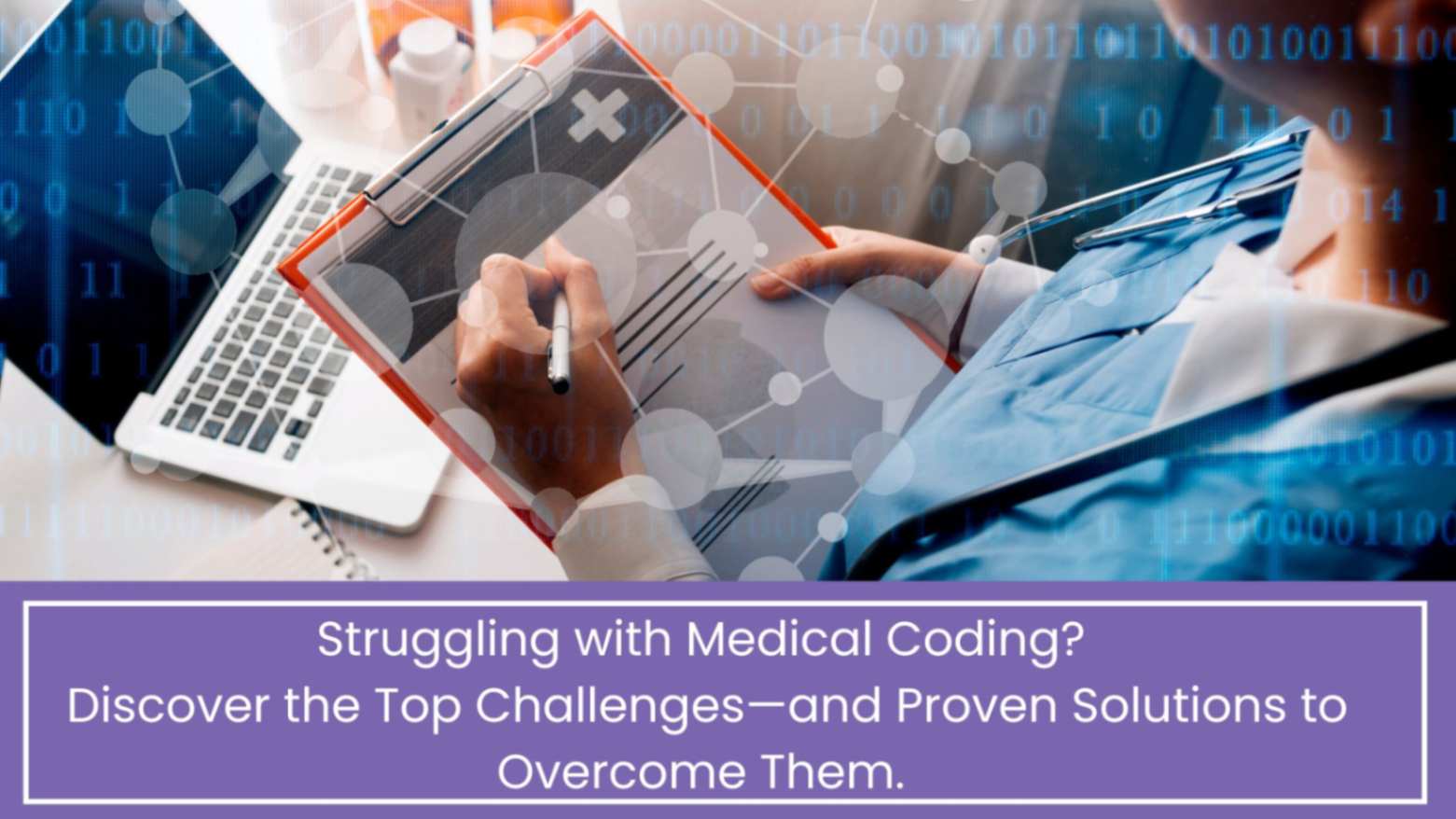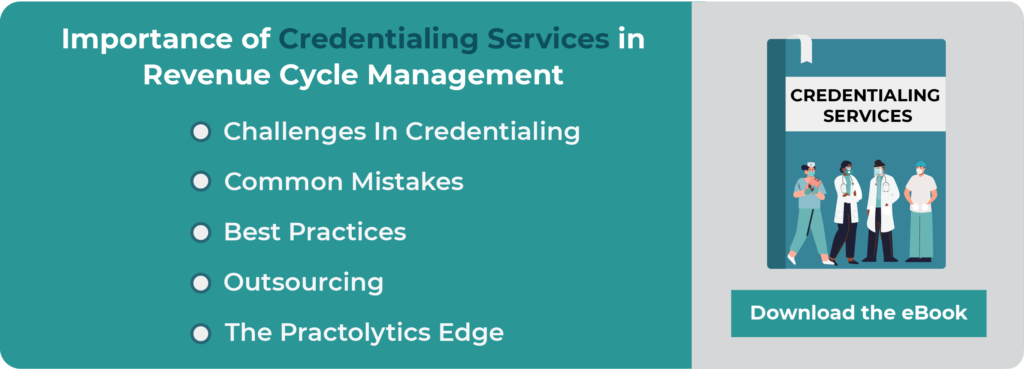Key Medical Coding Challenges and Solutions
The medical coding sector is undergoing significant upheaval. Technological developments, changing payment methods, and growing accuracy and compliance requirements are some of the elements driving this shift. In the 2025 era, medical coders and healthcare professionals have particular difficulties. Proactive action and a dedication to ongoing adaptation are necessary to meet these difficulties.
This blog article will examine the key medical coding challenges and solutions that are expected to arise in 2025 and provide practical answers to assist practices in effectively navigating this challenging climate.
1. The Ever-Evolving Code Sets and Guidelines
Over Medical coding Challenges faces a constant challenge due to rapid changes in coding standards. These changes are a significant source of ongoing problems. Annual updates are made to the CPT and ICD-10-CM codes. These codes represent new medical procedures, technologies, diagnoses, and developments. As of 2025, we have noted:
- Full Updates for ICD-10-CM: There are now about 400 additional ICD-10-CM codes. These changes include extended classifications for neurological and cardiac conditions as well as new codes for infectious illnesses like COVID sequelae. There’s also an increased specificity in injury and trauma codes.
- Changes in telehealth and remote patient monitoring, AI-assisted diagnostic procedures, and novel surgical techniques have led to the creation of dozens of new CPT and HCPCS codes. These new codes reflect these advancements in healthcare technology.
- For Evaluation and Management services, stricter E/M codes and documentation are given priority ((99202-99215)). Time-based coding requires precise documentation of the contact’s duration.
- Audit scrutiny is raised for modifiers that need thorough documentation and a convincing justification. Modifiers like 25 (E/M with a process) and 59 (distinct procedural service) are examples of these.
The Challenge:
Keeping up with these annual and perhaps quarterly changes may be rather challenging. Claims denials, audit risks, and income loss result from misunderstandings or from a failure to apply modifications immediately. Coder fatigue and inconsistent documentation compound these issues.
The Solution:
- Ongoing Education & Training: Provide coding workers with specialized, continuous training. This is not a one-time event. This is an ongoing commitment. Access to code guides and training is crucial. Regular webinars are also vital.
- Subscription Services offer trustworthy coding tools. Compliance alert systems notify users of essential changes in real time and automatically update with the most recent specifications.
- Promote candid dialogue among physicians, coders, and clinical staff. This fosters effective communication and collaboration. It is essential to hold regular meetings. These meetings should discuss the documentation needs for new codes or revisions to guidelines.
- Set aside time for coders to review revised standards. Have internal discussions about complicated situations.
2. Automation and AI’s Effects: A Two-Sided Sword
Medical coding Companies is being transformed by artificial intelligence. It is also being transformed by natural language processing and robotic process automation. This technology is leading to more precise and effective coding practices. However, there are new difficulties associated with its incorporation as well.
The Challenge:
- The calibre of the data provided to AI affects its performance. This directly affects how well AI performs. This emphasis on high-quality data ensures consistent results. Inaccurate AI suggestions may result from clinical paperwork. This is because AI may misread data if there is inconsistent, incomplete, or ambiguous documentation.
- Programmers who rely too heavily on AI recommendations risk accepting errors without critical examination. Their capacity for analysis may be weakened as a result.
- AI systems may unintentionally reinforce prejudices seen in previous data, resulting in discrepancies in coding or payment. This raises ethical and bias concerns.
- Complexities of Integration: Integrating new AI technologies with existing EHRs and billing systems may be costly and technically challenging.
- AI for Audit Scrutiny: Payers are also utilizing AI to identify coding trends that may indicate fraud, misuse, or errors in order to do more targeted and frequent audits.
The Solution:
- AI + Human Expertise Hybrid Model: The optimum approach is a “human-in-the-loop” model. AI should serve as a supporting tool, automating tedious tasks and making code suggestions, while knowledgeable human programmers supervise, validate, and manage complex, nuanced circumstances.
- Physician Documentation Improvement (CDI): Put your attention on strong CDI initiatives to make sure clinical documentation is comprehensive, precise, and easy for AI and human coders to understand. Inform providers of the direct effects that their documentation has on the correctness of their coding.
- AI Training & Monitoring: Use different, high-quality datasets to train AI models and track their effectiveness continuously. Put feedback loops in place to find and fix any biases or errors.
- Staff Upskilling: Teach programmers how to use AI technologies efficiently so that they may move from data entry to quality assurance, auditing, and problem-solving. There will be a strong need for specialized credentials in fields like AI-assisted auditing and coding.
- Vendor Due Diligence: Select AI programs that provide precise algorithms, data security, and compliance priority.
3. Navigating the Nuances of Value-Based Care (VBC) Coding
A new level of complexity for best medical coding services like practolytics is brought about by the healthcare industry’s rapid transition to value-based care models (VBC) in 2025. In addition to service volume, reimbursement is becoming more and more correlated with efficiency, quality measures, and patient outcomes.
The Challenge:
- Coders must understand both the services provided and the rationale behind them. The quality indicators linked to the services should also be known to them. The success of VBC depends on patient involvement programs, preventive services, and care coordination. Documentation is essential to support these initiatives.
- Risk Adjustment Coding (HCC) is essential. Hierarchical Condition Categories (HCCs) must be coded wholly and precisely. The complexity of a patient’s health status must be captured entirely by coders in order to provide appropriate risk adjustment payments. This requires a deeper understanding of chronic illnesses. It also calls for a deeper comprehension of their development.
- Bundled payments and shared savings programs require coders to consider the entire treatment episode. Coders must understand the nuances of these models beyond just specific CPT codes.
- Data silos can hinder performance monitoring. This is because data gathering depends on clinical and financial systems communicating. The ability to communicate between these systems is necessary for data gathering.
The Solution:
- Encourage doctors, programmers, administrative staff, and data analysts to coordinate more closely. This collaboration will improve data accuracy and efficiency. Clinicians must understand VBC documentation requirements. Coders need to be aware of VBC objectives and clinical procedures.
- Specialized VBC Training: Invest in educating coders on HCC coding, risk adjustment techniques, and the particular paperwork needed for different VBC programs.
- Strong Data Analytics: Put in place strong data analytics systems that can monitor performance about VBC metrics, spot care gaps, and assist in optimizing coding for outcomes-based reimbursement and quality reporting.
- Programs for Clinical Documentation Improvement (CDI): To guarantee that clinical documentation appropriately represents the patient’s disease severity, comorbidities, and overall care coordination efforts—all of which are essential for VBC models—strengthen CDI activities.
4. Cybersecurity and Data Privacy Imperatives
Medical coding operations will be heavily reliant on cybersecurity and data privacy. This is because medical records are becoming more and more digital, and remote coding is becoming more popular.
The Challenge:
There are more cyber threats now. One of the main objectives of cybercriminals is healthcare data. Disclosing private patient information carries hazards. These dangers may harm patients. Ransomware, phishing scams, and insider assaults are some of these threats. These dangers have the potential to be especially harmful.
- Adapting to changing demand is difficult. They need ongoing attention to detail to meet future federal standards and state-specific privacy legislation like the CCPA and HIPAA.
- Working remotely presents security risks. Among these difficulties are making sure coding teams have safe access and data processing.
- Security hazards may arise from using third-party vendors. Thorough screening is essential to reducing these hazards.
The Solution:
- Install strong cybersecurity protections. Multi-factor authentication, intrusion detection systems, and penetration testing are some of these safeguards. There is also end-to-end encryption.
- All staff should receive mandatory, regular cybersecurity awareness training. Regular and mandated cybersecurity awareness training should be provided to all staff members. More training should be provided to those who deal with protected health information.
- Strict access controls are essential. To restrict authorized personnel’s access to PHI, use role-based access restrictions.
- Verify that outside billing and coding partners follow stringent security and compliance guidelines. Perform thorough security audits and due diligence to confirm their compliance.
- Finding, stopping, and recovering from data breaches are the objectives of an incident response plan. A thorough incident response strategy should be created and tested.
Conclusion:
2025’s medical coding environment is defined by rapid transformation, integration of technology, and a constant drive for increased accuracy and value. These changes offer enormous opportunities. They also present considerable obstacles, including managing code modifications, utilizing AI effectively, adjusting to value-based treatment, and protecting patient data.
Practices that see difficulties as opportunities will prosper. They will thrive because they embrace innovation. By providing their employees with continual training, healthcare organizations can transform their medical coding processes. By utilizing AI technologies, updating documentation and processes, and bolstering cybersecurity defences, they can also enhance their coding methods. This proactive approach ensures compliance. It also maximizes reimbursement. It establishes the foundation for a future healthcare sector. This foundation will be patient-centered, financially secure, and efficient.
Value-based care models, AI integration, changing code sets, and increased cybersecurity requirements are all contributing to the rapid changes in the medical coding scene in 2025. Keeping up with rapid code revisions, striking a balance between AI automation and human monitoring, satisfying the requirements of risk-adjusted and value-based treatment, and protecting patient data in an era of remote work are just a few of the significant issues that medical coders and healthcare providers must deal with. Additionally, it provides practical, doable solutions like continuous staff training, improved clinical documentation, strategic AI deployment, and strong cybersecurity frameworks. Proactive adaptation becomes crucial as the industry moves toward more accuracy, efficiency, and compliance. Healthcare practices may secure sustainable, value-driven results, guarantee regulatory compliance, and expedite coding processes by investing in innovation and cross-functional collaboration.
ALSO READ – Is Your Practice Ready to Deal with the Challenges of Medical Billing?
Talk to Medical Billing Expert Today — Get a Free Demo Now!






